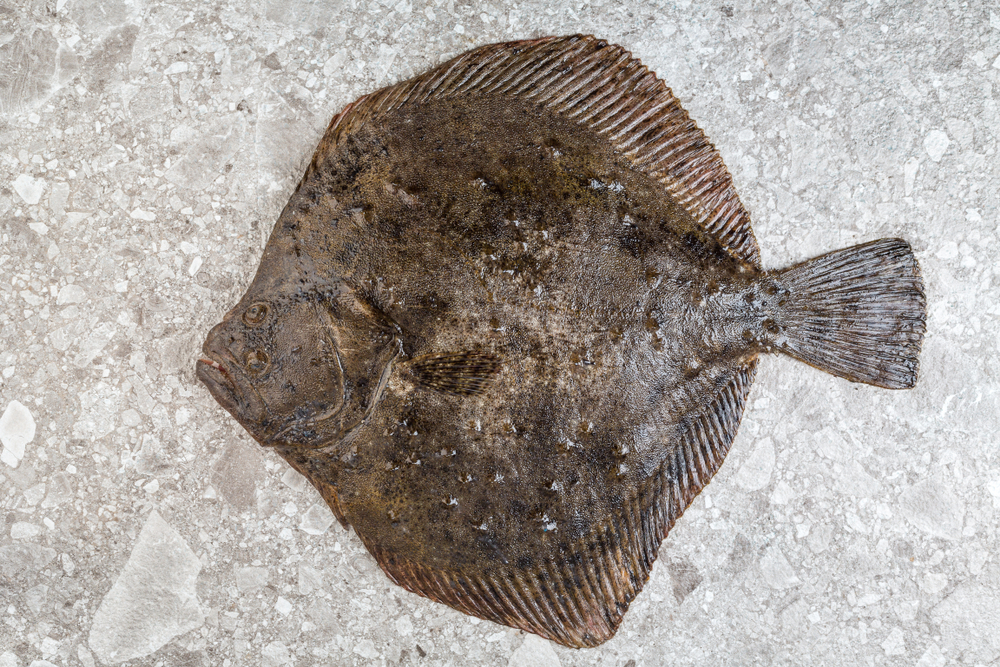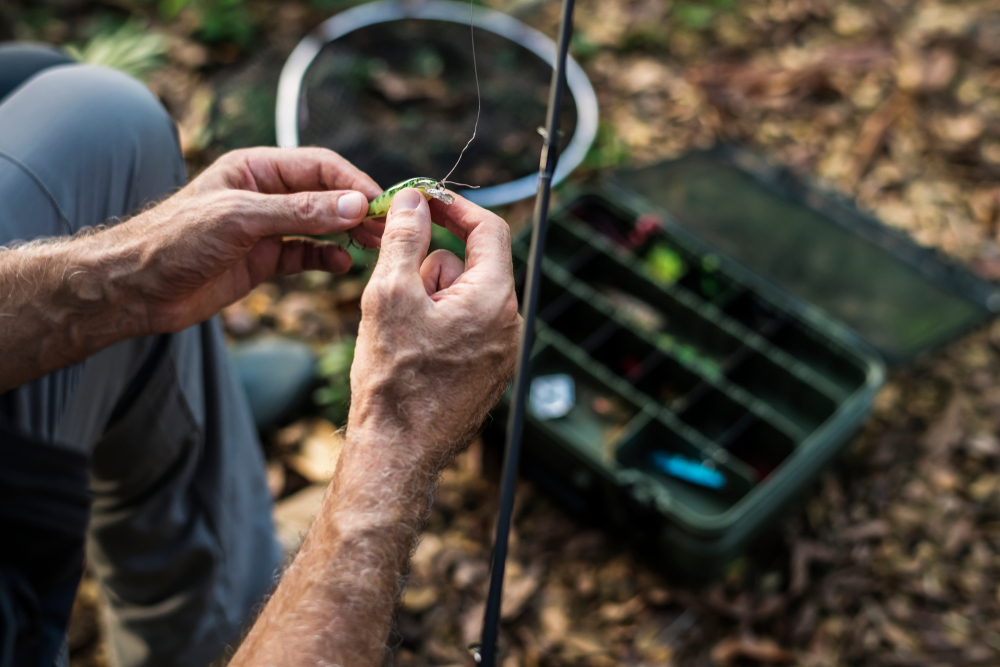Why fluke fishing
For the landlocked New Jersey longrodder catching fish during the day in the month of July is about as exciting as watching horseshoe crabs move along the beach. Changing environmental conditions that are indicative of our summer season have created the so-called, “summer doldrums” that are as much a nemesis as her winter counterpart, “cabin fever”. Such things as very warm surf temperatures that are approaching seventy degrees, little or no wave action or white water, and a sun that is high in the sky all contribute to putting the bass into their summer siesta mode.
While it is not impossible to hook into a linesider at this time your most opportunistic encounters will be at dawn , dusk, or during the nighttime hours. Night owls that can adjust their schedules so that their day is basically when every “non-fisher type person” is sleeping can still be rather successful. You will find that both the beachfronts and back bays will be viable options. Not only will bass be cooperating but weakfish will also be more than willing to strike out at your fly.
Some other options that you have at this time are to shift to the boat or kayak and head offshore and work some of the rock piles, lumps, or ridges that are holding fish. In this case however it is usually necessary to anchor up and to create a chum slick to bring the fish up towards the boat. Or you could cruise the open offshore waters running down pelagic schools of bluefish, dolphin, and tuna.
Many longrodders however are not fortunate enough to have these boat options available to them so they are stuck on foot. There is one saving grace that can occur during July that is worth mentioning at this point. This is a wind occurrence that can temporarily have a positive effect on the fishery and actually turn the bass on in the surf.
This would be the presence of a strong south wind for several days. This wind will produce an upwelling of much colder bottom water bringing it to the surface. As a result it is not uncommon to see surf temperatures drop from the upper sixties to mid-fifty degree ranges. This phenomenon will put the bass on the feed particularly at dawn and dusk and sometimes during the daytime hours. This event is short-lived however as the dominant west winds of the summer quickly return and warm the water once again while flattening it out.
So what is the salty longrodder to do if he wants to put a bend in his rod during this doldrums period? Well, how about targeting fluke with the fly rod. Fluke, you say, never heard of that one. Many longrodders probably have hooked one or two and think it is “just a fluke”, but because of their aggressive nature these tasty flatfish are a viable option for the summer longrodder. They will strike out at your fly and keep you busy when our other species are taking a break. “It’s no fluke” when you when your sites are set on hooking one and you do. Here’s what you need to know.
Fluke, (Paralichthys dentatus) are one of New Jersey’s two most common flatfish, the other being the winter flounder. Fluke will begin to migrate towards our beaches in the early spring and first catches are usually recorded around the first of May. They will move westward from their easterly wintering grounds near the edge of the continental shelf.
Anatomy of a fluke

One of the most peculiar characteristics of this fish is its appearance. It is a flat left-sided fish. When we look at the fish as it lays on the bottom the top of the fish is actually its left side. This is where you will find both eyes and a side that is heavily pigmented. In contrast its belly or right side is white.
The coloration of the fluke will vary depending on where the fish is located. Fluke that inhabit muddy bottoms will be a very dark brown or even blackish in appearance whereas fluke that inhabit sandy bottoms will be much lighter. Light to dark mottled patterns of spots and blotches will also be evident.
When you look in their mouth you will see that it is rather large and filled with teeth. This mouth type is indicative of its feeding behavior. It is an aggressive predator that will attack variety of baitfish such as spearing, sandeels, killies, and any type of juvenile fish that is available even other baby fluke. Besides fish, squid, crabs, and shrimp also make up a healthy part of their diet.
Location
The key to your success when targeting fluke is going to be location. Locating proper structure is not going to be difficult but it should be recognized that fluke will not hold in all areas along a beachfront.
When surf temperatures rise into the low sixty degree range you can find fluke right in the surf zone in areas that have good lateral or outwardly moving water that are bordered by holes, drop-offs, or troughs. Fluke will lie in ambush in these deeper depressions and attack a bait as the current drifts it by.
Any trough that lies behind a sand bar is a key holding area and more than likely your fly will get inhaled as it works up along the ledge of the trough as your fly is retrieved towards you. Equally as productive will be any holes that are located along the side of a jetty. Since jetties redirect water that is trying to move laterally along the beach good currents or rips can be found along their sides. Here again many fluke will hit you fly as it comes up through the hole and gets pinned as it approaches the rocks.
Similarly in the back bays your channels, ledges, and deeper holes are also fair game. Access to these however are much more difficult and will usually require a boat to set up on them.
Tidal Stage
I have found that the falling tides are usually the most productive times to hook fluke in the surf. During these tidal conditions the vertical height of the water in front of you is minimized and this bottom loving fish is more apt to swim upwards in the water column. The outgoing tidal flow also contributes to the better formation of rips and currents that can be found along the beach or jetty.
When working these locations along the beach allow your fly to drift with the current before you retrieve. This will allow your fly to sink lower in the water column and give the fluke more time to get an eyeball on it. It will also allow your fly to drift over subtler bottom changes that may be holding fish.
Fluke will have a tendency to follow your fly and many times you will get short hits as they aggressively strike out at your offering. If you feel these bumps shoot your line back to the same spot across the same drift and a hook up will usually result.
Equipment
As far as your equipment is concerned I wouldn’t worry about switching to lighter rods for the sport of the catch. You need to remember here that a nice size bass and blue can also easily take your offering. You don’t want to be under matched if this does happen. Your nine and ten weight rods that you normally hit the suds with will work fine. As far as lines are concerned I have caught fluke on all three types of lines: floating, intermediate, and sinking. Since the water you are fishing along the beach will be relatively shallow an intermediate or slow sinking line such as a 250 or 300-grain line will work fine. There is no need to dredge the bottom as fluke will swim up to hit your fly. Leader length should remain typical for your intermediate and sinking lines, no need to worry about any changes.
Flies

Fly selection is important to consistently hook fish that are holding in a particular area. Flies that resemble a spearing or sandeel imitation in terms of their profile are always effective and will regularly hook fish. These can be emulated with clousers, Popovics jiggy fleyes, surf candies, or half and halfs. But over the years I have noticed two things about clousers, jiggies, and half and halfs that make them even more effective.
The first is color. Regardless which of these flies that you use white should dominant in the fly. This color is key and for some reason never fails to draw strikes. From here you can add some natural colors such as olive, green, black, or gray. A hint of flash doesn’t hurt either.
The second factor is profile. I have found that opting for a wider profile fly rather than a slender thin bait draws more strikes. Dress your flies out more fully with white bucktail and your strike to cast ratio will go up. Remember here that the fluke has a large mouth and will take large baits readily. Just look to our traditional methods that employ large bucktail and squid combos and you’ll see what I mean.
Another trick that our guide service has found to be effective is to tie some flies with a fair amount of angel hair on the bottom of the fly. The addition of this flash nicely emulates the iridescent stripe that runs along the side of a spearing’s body and really gets the attention of the fluke. The pearl green color is most effective.
Fighting a Fluke
The majority of the fluke you catch will be on the small side so don’t expect them to take you into your backing like a bass or bluefish. They just aren’t powerful enough to do so. They can be landed without getting them on the reel. However, any fish larger than twenty inches or more I would recommend doing so. The reason is that these fish will take line in short spurts. If you are holding the line in your stripping hand there is a good chance that the fly will pull from the fish’s mouth when it wants to run and the line is not released. Your reel drag will be able to apply a much smoother resistance that your fingers can on the line.
A second consideration for putting the fish on the reel is when you are on the rocks. I have seen fly fishers bend over to lift their catch while their line falls out of their basket into the rocks. Now a sixty-dollar line can get entangled, frayed on barnacles, or lost all at the expense of a throwback. Use your judgment in cases like these. It is not worth losing a line over.
Regulations
Fluke make for some fine table fare. If you are going to take any home for dinner you should be aware of the size and bag limits that are in place for this season. This year’s regulations for New Jersey state waters which is from zero to three miles out are as follows: A season running from May 12th through September 11th with a minimum size of 16 inches. Daily bag limits are eight fish.
Just for your information if you head beyond three miles to fish for fluke in a more conventional manner than you are in federal waters. In federal waters the season runs from May 25th through September 4th. A minimum size of 15 inches is in place with a three fluke daily bag limit.
So there you have it. For the summer angler catching fluke has traditionally been as American as apple pie. This tasty flatfish has provided many with relief from the summer doldrums and now you can add a few more to that list, but not by conventional means. But rather by what many would deem an unconventional method with the longrod. Hey, “it’s no fluke” and with a little practice it can be easily mastered. Good fishinG….fly fishing that is!






